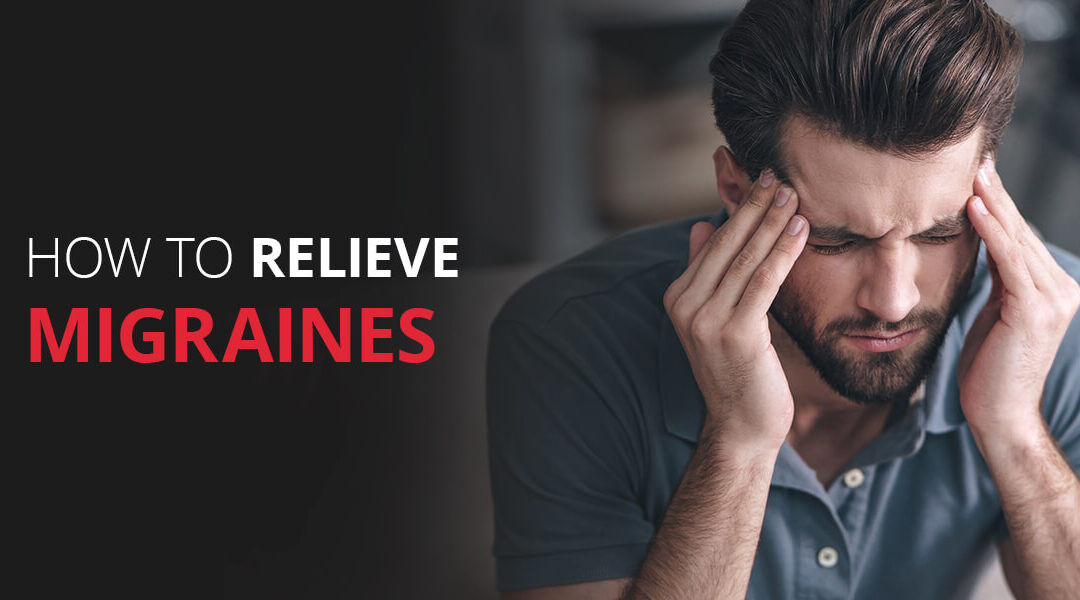If you have ever experienced a migraine, you likely know the warning signs and just how debilitating the type of headache can be. Maybe you notice visual disturbances, like flashing lights or fuzzy vision, or become irritated, feel depressed or are more tired than usual. Once the pain of the migraine sets in, you might struggle with the pain for hours or even days.
Migraines are incredibly common, with one in four U.S. households having a member who suffers from this type of headache. If you struggle with migraines, you likely have plenty of questions. How is a migraine different from other headaches? What causes migraines? Can a chiropractor help with migraines? Learn the answers to these questions and take steps to find relief.
Types of Headaches
“Headache” is a general term to describe a pain we feel in the head, but there are various headache types, each with distinct symptoms and causes. Some of the most common headaches include:
- Tension headaches: As one of the most common types of headaches, tension headaches can cause pain in the head, neck and behind the eyes. Approximately 3% of people experience tension headaches. These headaches can be triggered by many different things, such as stress, cold temperatures, caffeine, alcohol, lack of sleep and a cold or the flu.
- Cluster headaches: Cluster headaches are extremely painful headaches that typically cause pain on one side of the head, often close to one of the eyes. These headaches occur in cyclical periods, known as clusters.
- Sinus headaches: The sinuses are cavities located in your forehead, cheekbones and between your eyes. When you are struggling with allergies or a sinus infection, pressure can build in these areas and cause headaches.
- Exertion headaches: If you have ever experienced a headache after a vigorous workout, you are familiar with exertion headaches. This type of headache occurs following strenuous physical activity. They may only last for a few minutes or linger for hours.
- Migraines: Migraines are characterized by a throbbing pain, usually just on one side of the head. This pain can be accompanied by other unpleasant symptoms, like a sensitivity to light and nausea. Migraines can last hours or even days at a time.
What Causes Migraines
Migraine triggers can include:
- Hormonal changes: Changes in hormone levels related to a woman’s menstrual cycle may play a factor in migraines. For example, the drop in estrogen levels before an individual’s period may trigger a headache or migraine.
- Stress: Many people identify stress as a trigger for their migraines. The exact link between stress and migraines has yet to be fully understood, but research suggests that the changing levels of different chemicals in the brain during and after a period of stress may play a role.
- Food and drink: Certain types of foods and drinks have been shown to be migraine triggers. For example, chocolates, certain kinds of fruits, tomatoes and nuts have been linked to migraines. Likewise, alcohol and caffeinated beverages can be migraine triggers for some people.
- Changes in the weather: The changing seasons can be welcome for some people, but for others, shifts in the weather can trigger migraines. Changes in barometric pressure, temperature changes and humidity are all potential migraine triggers.
- Lack of sleep: The exact link between sleep and migraines is still being examined by experts, but getting too much or too little sleep can trigger a migraine. Additionally, migraines themselves can disrupt your sleep cycle.
How Chiropractors Can Help With Migraines
Can a chiropractor help with headaches? Headaches and chiropractic treatment may seem unrelated, but chiropractors often see patients struggling with migraines. A chiropractor for migraines will assess your symptoms and determine how to create a care plan. Headache and migraine chiropractic care can look different for different people.
For some, a chiropractor may suggest manual therapy to address neck stiffness and pain that can come with migraines. Other treatment approaches include massage therapy and myofascial release. In addition to hands-on treatment, your chiropractor can help you look at potential lifestyle changes that could help alleviate your migraines.
Additional Tips for Migraine Relief
While long-term chiropractic care and daily habits may help with migraines, there are also some things you can do at home to manage your symptoms:
- Identify your triggers: If you are wondering how to get rid of a headache or migraine, determining your major headache triggers is a good place to start. Do your headaches seem to follow eating a certain type of food or drinking a lot of caffeine? Do your headaches pop up after you have spent several nights in a row without enough sleep? Knowing your triggers can help to reduce your risk of having another migraine.
- Manage your stress levels: Keeping your stress levels down is one of the top recommendations for ways to alleviate headaches and headache frequency. Stress is a known trigger for many types of headaches, including migraines. While stress in our lives is inevitable, building healthy habits to address that stress can help reduce the risk of triggering unpleasant issues like headaches.
- Maintain a healthy diet and sleep habits: If you are looking for ways to help a headache or a migraine, maintaining a healthy diet and a regular sleep schedule can help. This includes proper hydration.
- Find the right environment: Knowing your triggers and living a healthy lifestyle can help reduce your risk of migraines, but it won’t necessarily eliminate them entirely. If you do feel the warning signs of a migraine, have a plan to find the right kind of environment for the duration of the pain. Sit in a room with the lights turned off or the curtains closed. Apply a hot or cold compress to the site of the pain.
Schedule an Appointment at Thrive
Thrive Chiropractic Group is made up of a dedicated team offering a wide variety of chiropractic solutions. In addition to treating neck pain, back pain and muscle tension, we also address migraines and other types of headaches. Chiropractic adjustments can help reduce tension in the neck and improve overall spinal function, which can help with your headaches. Our team also works with you on whole-body health, helping you identify and manage your migraine triggers.
If you are looking for a chiropractor for migraines, we are here to help you reduce your pain and improve your quality of life. Fill out our online form, and we will be in touch to schedule your first appointment and discuss how chiropractic care helps migraines.



